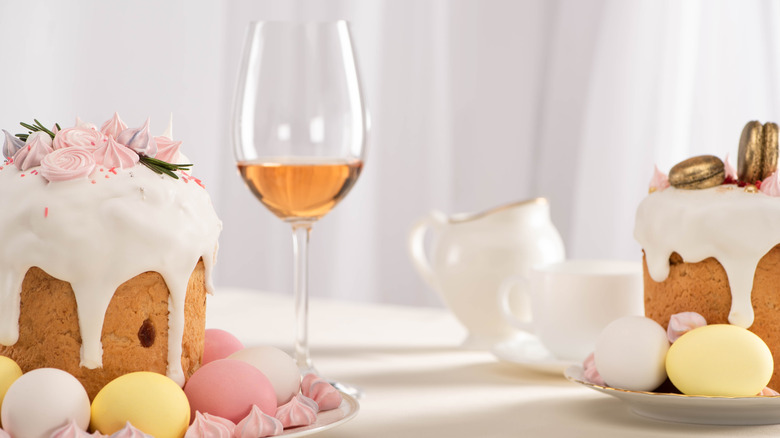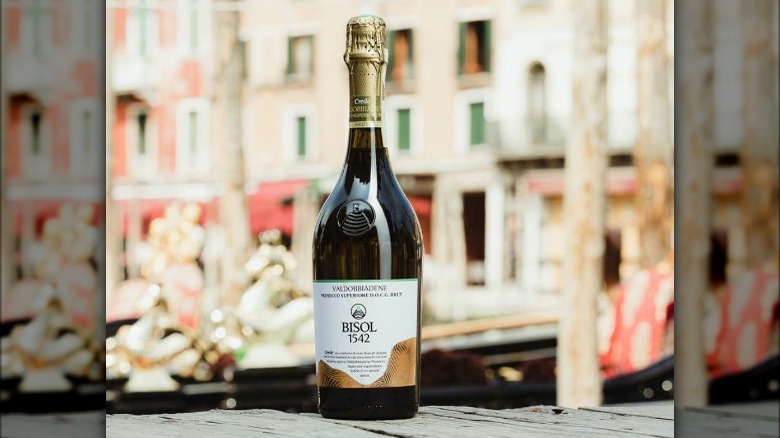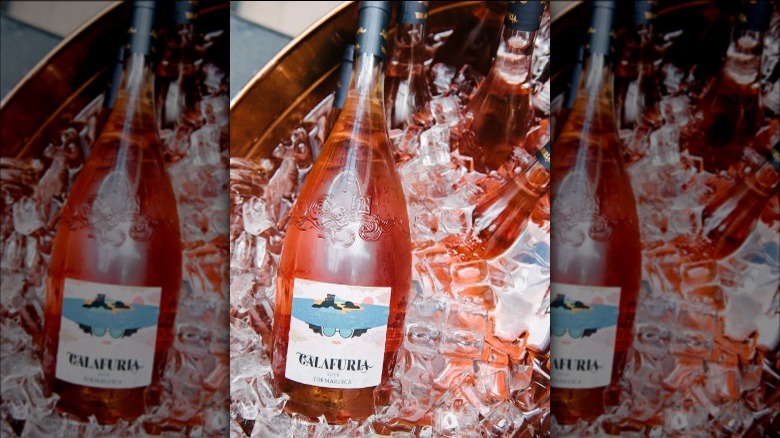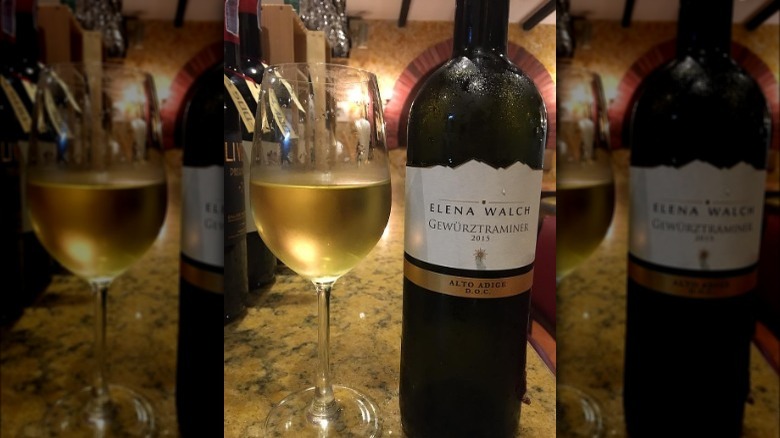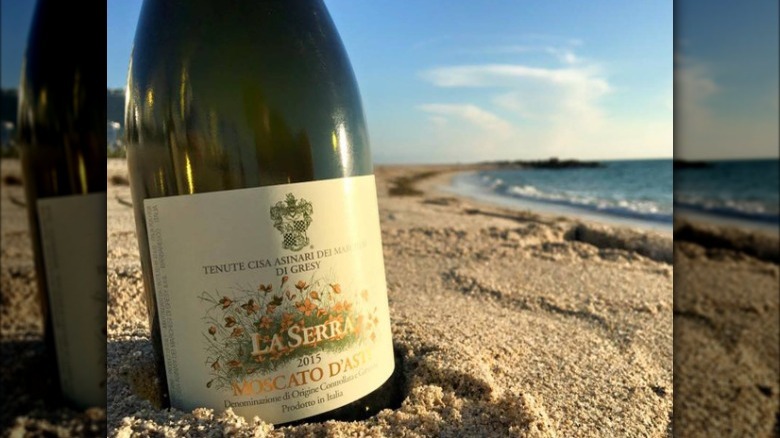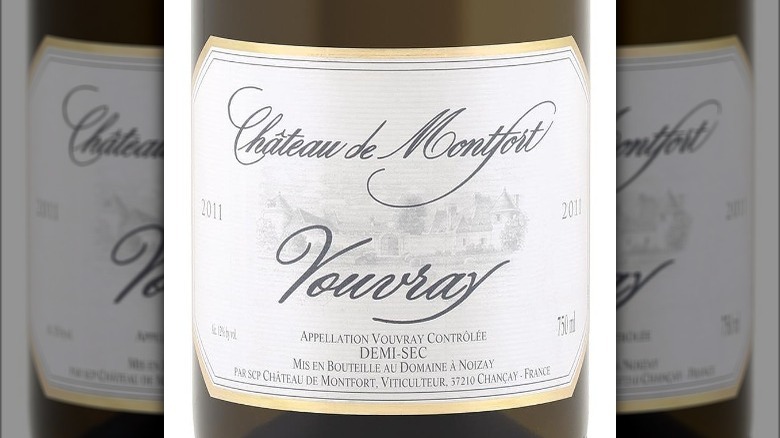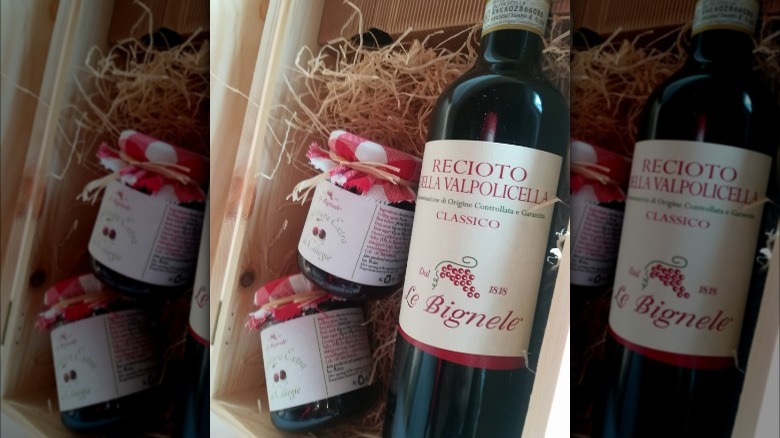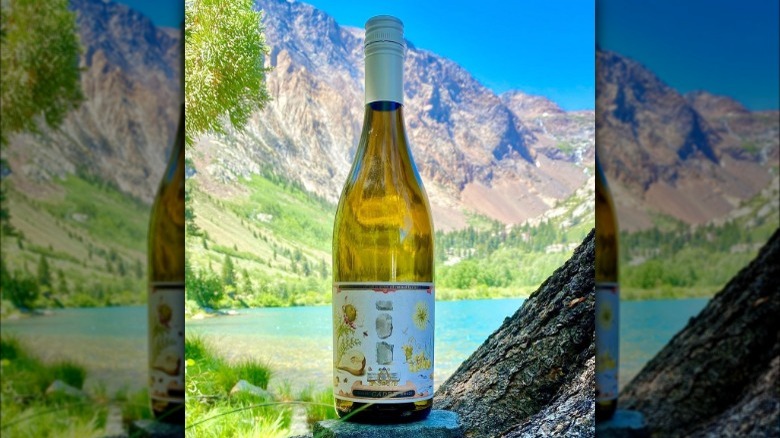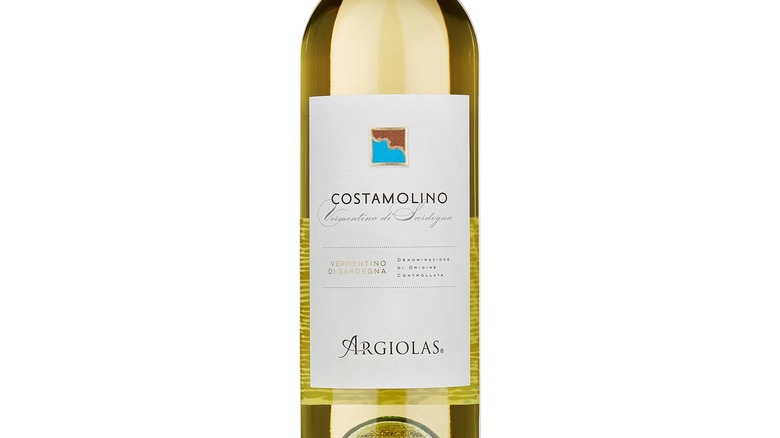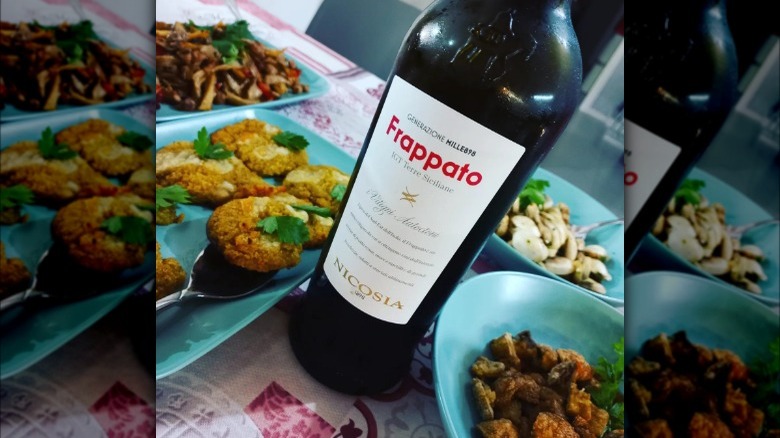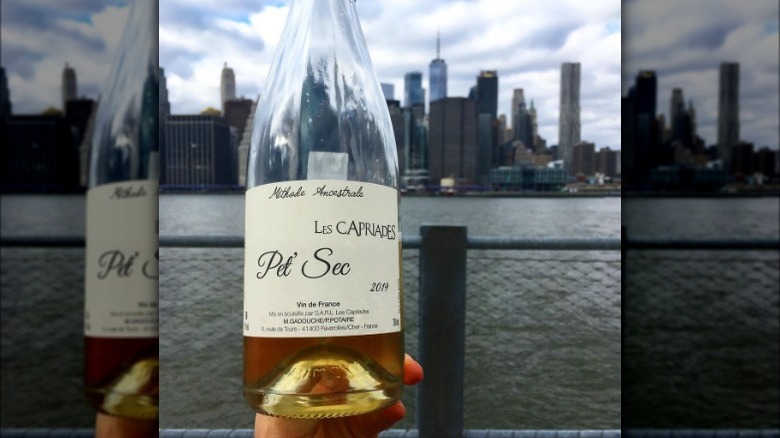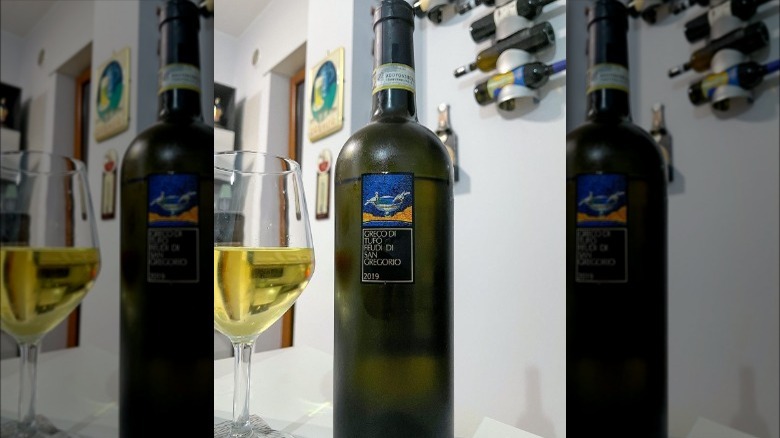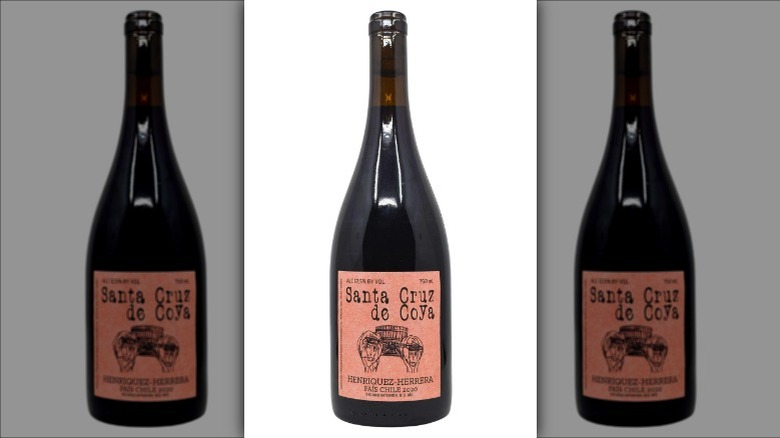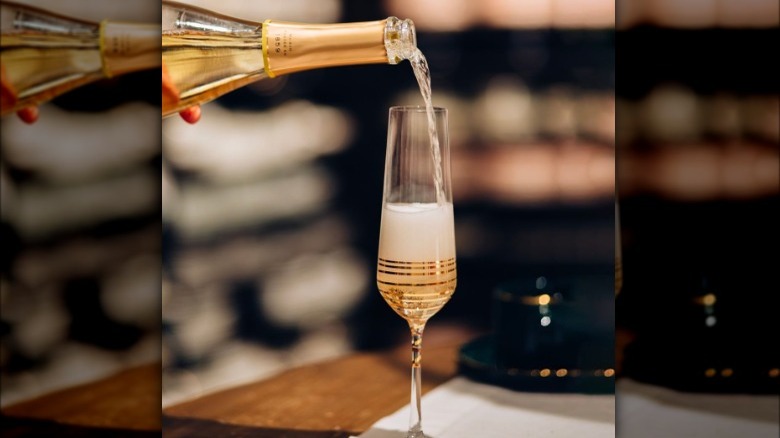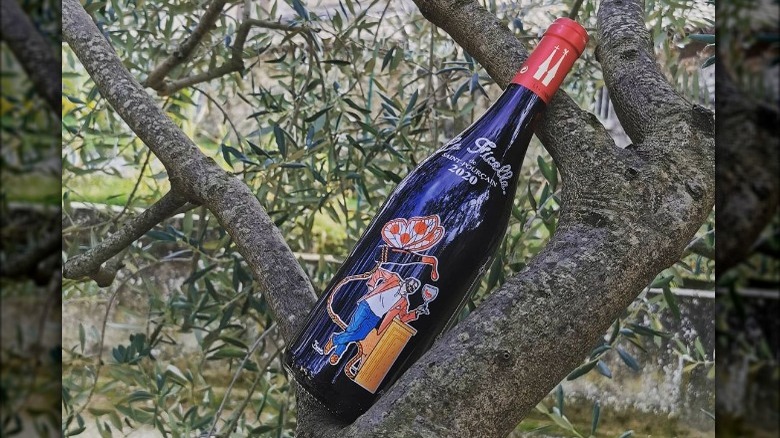14 Wines To Serve At Easter Brunch
If Easter celebrations are among the events you have scheduled for early spring, chances are that a couple of hearty meals are in your imminent future. While we're always ready to sit down to a festive dinner, Easter brunch offers us a range of dining options beyond the usual. Of course, it goes without saying that we're pairing our favorite wines with some classic mid-morning feasting dishes.
Although brunch is meant to combine breakfast and lunch, its timing can vary widely in the day from as early as 10 a.m. to 4 p.m. This can depend on your lifestyle, dining habits, and the rest of your plans for the day, but suffice it to say it is an incredibly versatile meal. And while we wouldn't necessarily suggest regularly pairing an early-riser brunch with a bottle of wine, Easter is a great occasion to imbibe with loved ones. Not to mention, many people give up alcohol during Lent, meaning that your palate will be cleansed and ready to taste something new.
We've assembled a selection of the best wines to pair with your Easter brunch spread. The earlier mealtime and mixed brunch fare are reflected in our choices, which tend to be lighter-bodied and lower in alcohol. Whether you're dishing out sweet or savory bites or are going all out with glazed ham or a roast, we have just the right bottle to go with your meal.
Prosecco
As one of the most recognizable types of sparkling wine, Prosecco comes in all shapes and sizes. You could pay close to nothing for a mass-produced bottle or choose something that's still affordable but made with more attention to the terroir. The bubbly drink is named after the region in Italy where it is made from the local glera grape. Aside from a wide range in quality, Prosecco also runs the gamut from sweet to dry, making it a good option for pairing with assorted dishes — especially brunch.
Bisol is a top name in the Prosecco industry with five centuries of experience backing up its winemaking tradition. Valdobbiadene Prosecco Superiore DOCG is a prized designation, and Bisol's Crede Brut holds this prestigious label. The vineyards sit on what was once seabed, giving the wine a characteristic freshness. With aromas of pear, apple, and white flowers, this elegant Prosecco will pair seamlessly with light seafood dishes such as crab cakes or smoked salmon. Thanks to its balanced flavors, it's also a great option to serve your guests as they are settling in.
Rosé
They don't say "rosé all day" for no reason. Although the wine style offers diverse features, there's something about the light pink hue that begs to be enjoyed in the daylight. Your mind may trick you into thinking that the rosy drink can only be sweet, but dry rosé is just as common. If you're on the fence about whether you're in the mood for a glass of red or white wine, this happy medium is an easy compromise. You may get a bit more structure and light tannin than white wine, but without the fuller weight on the palate that many red wines deliver.
Calafuria is a delightfully refreshing rosé to accompany your Easter dining experience. Southern Italy may bring to mind big bold red wines, but this fruity and floral flavor profile is anything but overwhelming. The light body and generous aromatics are bound to evoke a holiday feeling. Notes of peach, pomegranate, and citrus keep it lively and perfectly sippable. Serve it as an aperitif or pair it with vegetable dishes, salads, or a mixed charcuterie board.
Gewürztraminer
Some grape varieties are instantly recognizable the second your nose approaches the glass. Gewürztraminer, known for its heady aromatics, is a fine example. Gewürz is the German word for spices, and you'll get a mixed bag of them in each sip too. The grape is primarily grown in Germany, Alsace, and Northern Italy, though it can be found worldwide. It likely originates from the town Tramin (hence the second half of its name) in Northern Italy, where it has received plenty of recognition.
Elena Walch is a highly reputed winery in South Tyrol that makes a couple of different versions of gewürztraminer wines. Its classic style features elements that are characteristic of the grape, making it an excellent introduction for newbies. This is a fuller-bodied white, with a rich depth and floral notes of rose petals mingling with spices and subtle flavors of tropical fruit. It'll pair nicely with pâté, shrimp dishes, and mild cheeses, but you'll want to start with a solo whiff to appreciate the complexities of this variety.
Moscato d'Asti
Moscato is a familiar grape variety for many people, but it isn't always given the opportunity to shine. If the sugar and acidity are unbalanced, the result is overwhelmingly sweet and honeyed. When done right, such as often the case in the Italian region of Asti, it's worthy of high praise.
Marchesi di Gresy winery produces La Serra, named after the vineyards where these moscato grapes grow. The wine is rich and lusciously flavored, with notes of stone fruit, tropical fruits, and herbs. This style of wine boasts a low alcohol content and in turn, high residual sugar. However, thanks to the perfect equilibrium of fresh acidity and sugar, the sweetness is not overpowering. Meanwhile, a hint of effervescence washes over your palate with every sip.
At just 5% ABV, this Moscato d'Asti won't knock you out at brunch time. Its hearty fruit aromas make it a great pairing with fruit-based dishes and soft cheese. Sip on it as you enjoy a spoonful of yogurt parfait or bite into a flaky apple turnover. Alternatively, skip the usual aperitif suspects and pour La Serra to initiate the festivities.
Demi-sec Vouvray
If ever there was a time to savor a sweet wine, we'd argue that it's at brunch. Perhaps you're still easing into the day, munching on a bowl of strawberries and passing around a basket of buttery croissants. Vouvray in the Loire valley is known for its wide range of wine styles made from the chenin blanc grape. From sweet to dry and still to sparkling, there's an option for everyone.
Château de Montfort has long been perfecting its technique in the vineyards and cellar, and its demi-sec Vouvray highlights some of the variety's best characteristics. The fruit is grown from well-established vines and offers an excellent balance of sugar and acidity. True to chenin blanc's features, honeyed notes of green apple, stone fruits, and a mineral streak are present in this vibrant wine. Pour it when your brunch guests arrive, serve it as you savor a piece of baguette with soft cheese and fruit jelly, or sip it alongside a decadent crab cake. And if a glazed ham is on the table, the sweet notes make a complementary match too.
Recioto della Valpolicella
This sweet sipper is a reminder that not all wines are created equally. The complexity of Recioto comes from the dried grapes used in its production. If you've ever tasted Amarone della Valpolicella, a powerful red wine made in a similar fashion, Recioto is basically the sweet version. By pressing the juice from grapes which are air-dried over a few months, the flavors of the resulting wine are concentrated.
Le Bignele is a family-owned winery in the region that has been operating for over two centuries. Its Recioto Classico della Valpolicella is a delightful example of this traditional wine, with aromas of cherry jam and dried fruits on the palate. Every sip is velvety smooth and well-balanced despite the intensity. This deep red wine makes a delicious pairing with dark chocolate desserts (those foil-wrapped Easter eggs are a winner) or served with pungent cheese or rich meat dishes like leg of lamb. And if you enjoy sweet wines for their innate qualities, you'll love savoring this one solo.
Grüner veltliner
Easter's intrinsic association with spring means that your brunch menu may welcome an assortment of fresh vegetables. While we love a bright green harvest, many vegetables contain compounds that make them kind of tricky to pair with wine. Artichokes, asparagus, spinach, and the like may be packed with healthy nutrients but they tend to clash with other flavors.
Grüner veltliner is an excellent match for foods with these profiles. It has an herbaceous nature itself, and it can feature aromas of citrus, green bell peppers, and white pepper. It comes in a nuanced range from zingy light styles to wines with more depth and creaminess on the palate.
Although it's Austria's darling white wine grape, it continues to expand to vineyards worldwide, including in Edna Valley, California. A chilled glass of Band of Stones grüner from family-owned Cadre Winery makes a seamless pairing with your Easter brunch. With citrusy notes, an element of savory spice, floral aromas, and a hint of salinity, it'll be a delight served side by side with an asparagus salad or roasted artichoke dish.
Vermentino
Vermentino is another contender to serve with difficult vegetables. The grape grows primarily in Tuscany, Sardinia, and the south of France, where it develops fruity flavors of citrus, apple, flowers, and almonds. Depending on how it is produced, it can be light and refreshing or fuller-bodied with layered complexities, both of which are great paired with or without food.
Argiolas winery on the island of Sardinia offers an elegant style of vermentino with its Costamolino bottle. Thanks to modern and traditional influences, the winemaking is fresh and lively, highlighting the grape's delicate features. Fruity, floral, and herbal notes are played up by the presence of acidity, resulting in a wine that is decidedly easy to drink. A few bottles of Costamolino in your fridge will accompany you and your guests from start to finish. Serve it with those tricky salads, a cheese spread, or with coastal fare to evoke a Sardinian flair.
Frappato
Brunch wines tend to veer heavily toward white and bubbly styles, but that's not to say that a nice glass of red isn't welcome. While we're less inclined to knock back a high-alcohol tannic red wine at brunch, no judgment if that's your style. We'll just be here sipping on a glass of frappato from Cantine Nicosia by Generazione Mille898. The family-owned Sicilian winery highlights the island's rich terroir with indigenous and international grape varieties. Thanks to volcanic activity, Sicily is known for its diverse soil types that lend themselves to growing vines.
Frappato is one of the island's native grapes which makes it less common to find if you aren't purposely seeking it out. You'll definitely want to hunt down this bottle though. Bright notes of red fruits and spice mingle in this light-bodied wine. The grape's thin skins translate as smooth tannins, preventing it from sticking to your palate as you enjoy an Easter brunch spread. It'll pair wonderfully with a charcuterie platter, or try it with a cheesy sausage breakfast casserole.
Pétillant naturel
Pét-nat may not still be at the pinnacle it was in recent years, but if you've dismissed the lightly effervescent wine, you're doing yourself a disservice. The style of bubbly is closely associated with natural wine, but it goes beyond black-and-white categorizations. At its most basic, it's just a simpler way of introducing bubbles into a bottle, and that's something to applaud. While you won't typically get the level of mousse you might find in Champagne or other traditional method sparkling wines, it's nothing to turn your nose up at.
When you're enjoying a glass with loved ones at Easter brunch, a lighter style of bubbly like pét-nat is an ideal accompaniment. Les Capriades in France's Loire Valley is the labor of love of two self-proclaimed "explorer craftsmen," who produce natural sparkling wines following the ancestral method. Pét'Sec blanc is a fine example, made from a blend of white grapes including chardonnay. Notes of citrus, green apple, and stone fruit make this a quaffable wine you'll love solo or with pretty much any brunch dish. Match the understated luxury of a traditional Easter bread by serving it with a chilled glass of Pét'Sec, or pour it alongside a stack of pancakes and you're set.
Greco di Tufo
If your go-to Italian white wine is pinot grigio, hopefully, you're also keen to switch it up with one of the country's numerous indigenous grapes. Greco is typically grown on the warm southern coast in the province of Campania. Its most prestigious version is Greco di Tufo DOCG, prized for the vineyards' tufo soils, aka tuff from the region's volcanic rock. This characteristic soil is believed to infuse the fruit with a unique expression of terroir.
Feudi di San Gregorio is a top producer in the area, known for its focus on local grape varieties. Its Greco di Tufo wine is intensely flavored, with an interplay of fruit, minerality, and spice on the palate. Notes of green apple, pear, citrus, and honey are pleasantly balanced by a stony finish. Thanks to its delicate acidity, it makes an excellent pairing with food — especially a mid-day Easter feast. Enjoy it with a Caprese salad, smoked salmon, or grilled white fish, or savor its features solo.
País
Many modern winemakers are setting aside long-revered grapes that are internationally recognized in favor of indigenous varieties that have been dismissed in the recent past. This means that consumers have an expanded range of options beyond usual players like cabernet sauvignon and chardonnay. In Chile, the país grape is increasingly used in viticulture, thanks to its long history of growing on the land.
Roberto Henriquez prioritizes this centuries-old variety in the south of Chile, producing a range of wines made with it. Santa Cruz de Coya is made with 100% país from a vineyard that's been around for 200 years, which is unheard of in Europe where the phylloxera pest destroyed most vineyards in the second half of the 19th century. Flavors of red and dark fruits are contrasted by herbal notes and a hint of spice. The low-intervention wine is both a great introduction to país as well as an excellent red for your Easter spread. It benefits from a slight chill, preventing it from being too weighty on the palate as you eat your way through the afternoon.
Sparkling rosé
Bubbles are on our list of favorite wines, whether or not there's an occasion to celebrate. The mere pop of the cork is enough to warrant festivities in our eyes. Nevertheless, Easter is the perfect excuse to sip on sparkling wine, and a rosé style is even more appropriate. It'll pair well with both the decor and a wide selection of brunch dishes, thanks to its pastel hue and palate-cleansing quality. Rosé can be made with any red grape, though some are more common and well-suited.
Louis de Grenelle's Cuvée Corail is made with cabernet franc and grolleau grapes in the Loire Vally in France. The result is bold and fruity, with notes of red berries, sour candy, and flowers. Although it's unapologetically fruit-forward, the wine is still brut and shies away from being sweet. Enjoy it with fruit and cream-based desserts, as an aperitif to add a spark to your Easter festivities, or simply as an all-around delicious match for whatever ends up on your plate.
Pinot noir and gamay blend
Pinot noir and gamay are two popular grape varieties for lighter-bodied red wines. While each has its unique properties, there is an overlap that is wonderfully highlighted when they are vinified as a blend. La Ficelle de Saint-Pourçain is a fine example of the duo, featuring two-thirds pinot with the remainder gamay. This fruity wine boasts notes of red and black berries, enhanced by a mouthful of spice. Smooth tannins keep it light and make it an excellent candidate to serve chilled.
If your Easter brunch includes a charcuterie or cheese spread, La Ficelle is an obvious match. Meanwhile, richer saucy dishes with tomatoes and spices would definitely benefit from this lively wine, as would a hearty piece of focaccia with grilled vegetables. Or, pour a glass to wash down a few strips of smoky bacon or grilled sausage. Thanks to its fruity nature and dry palate, this is an easy wine to enjoy no matter the pairing.
